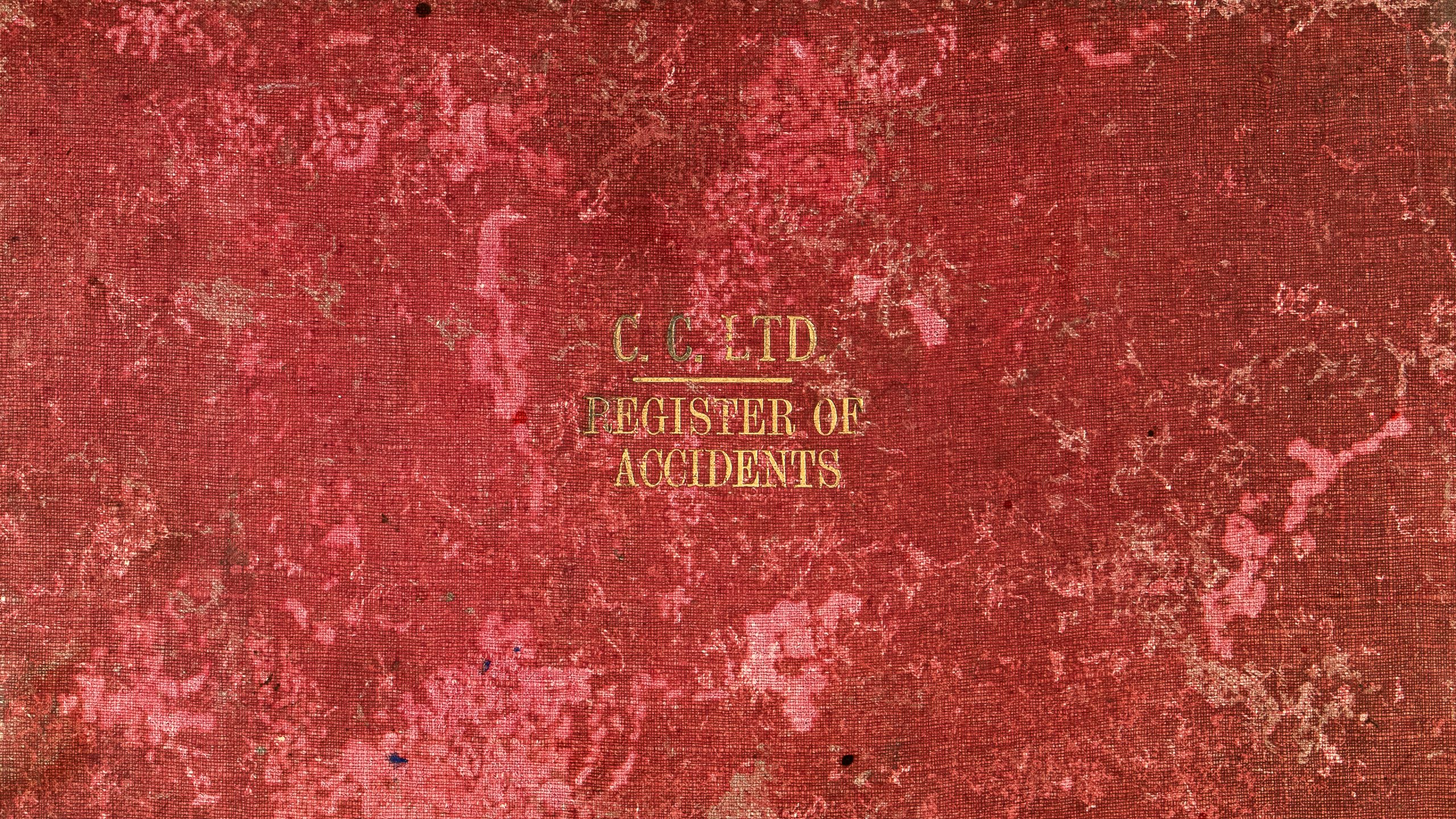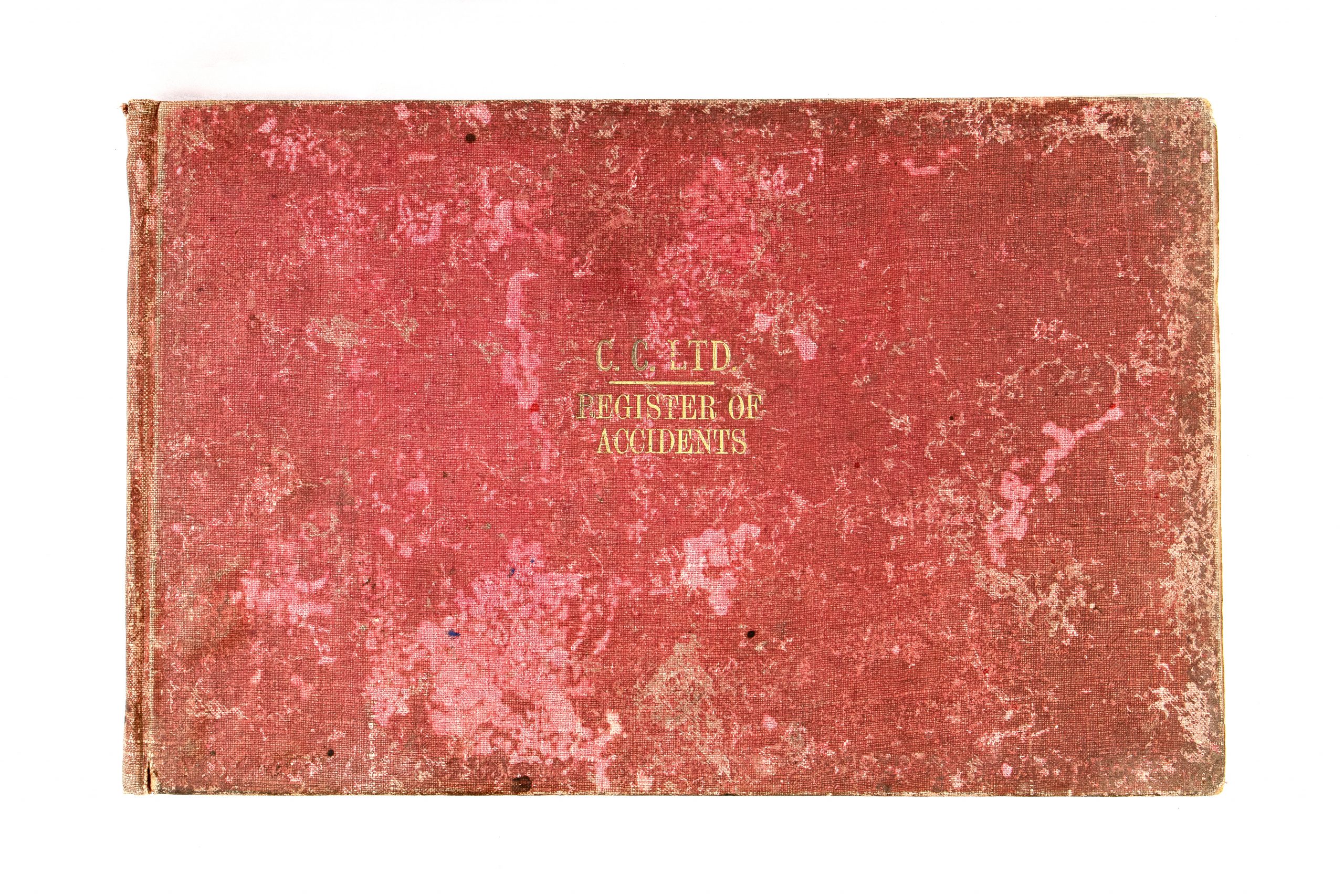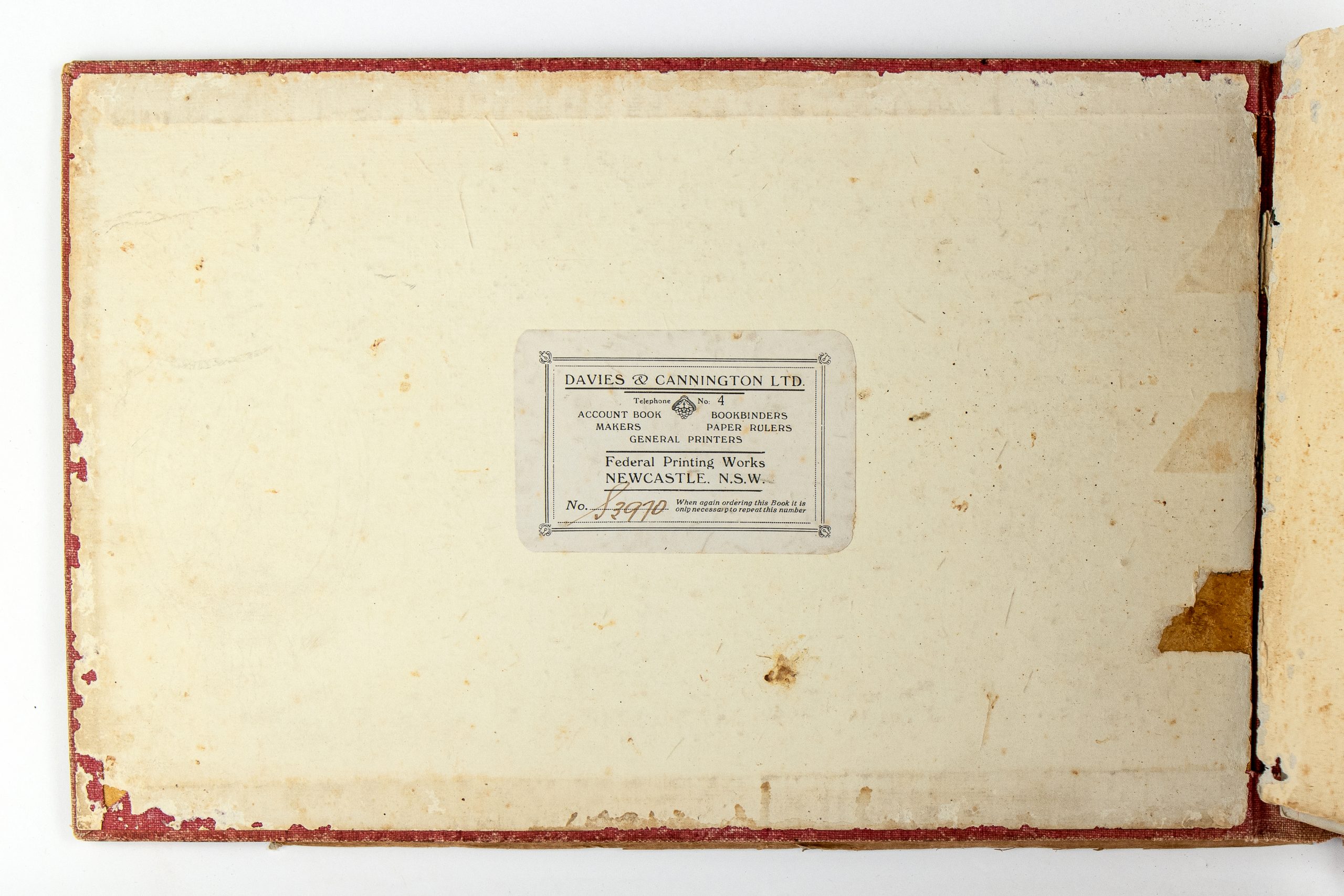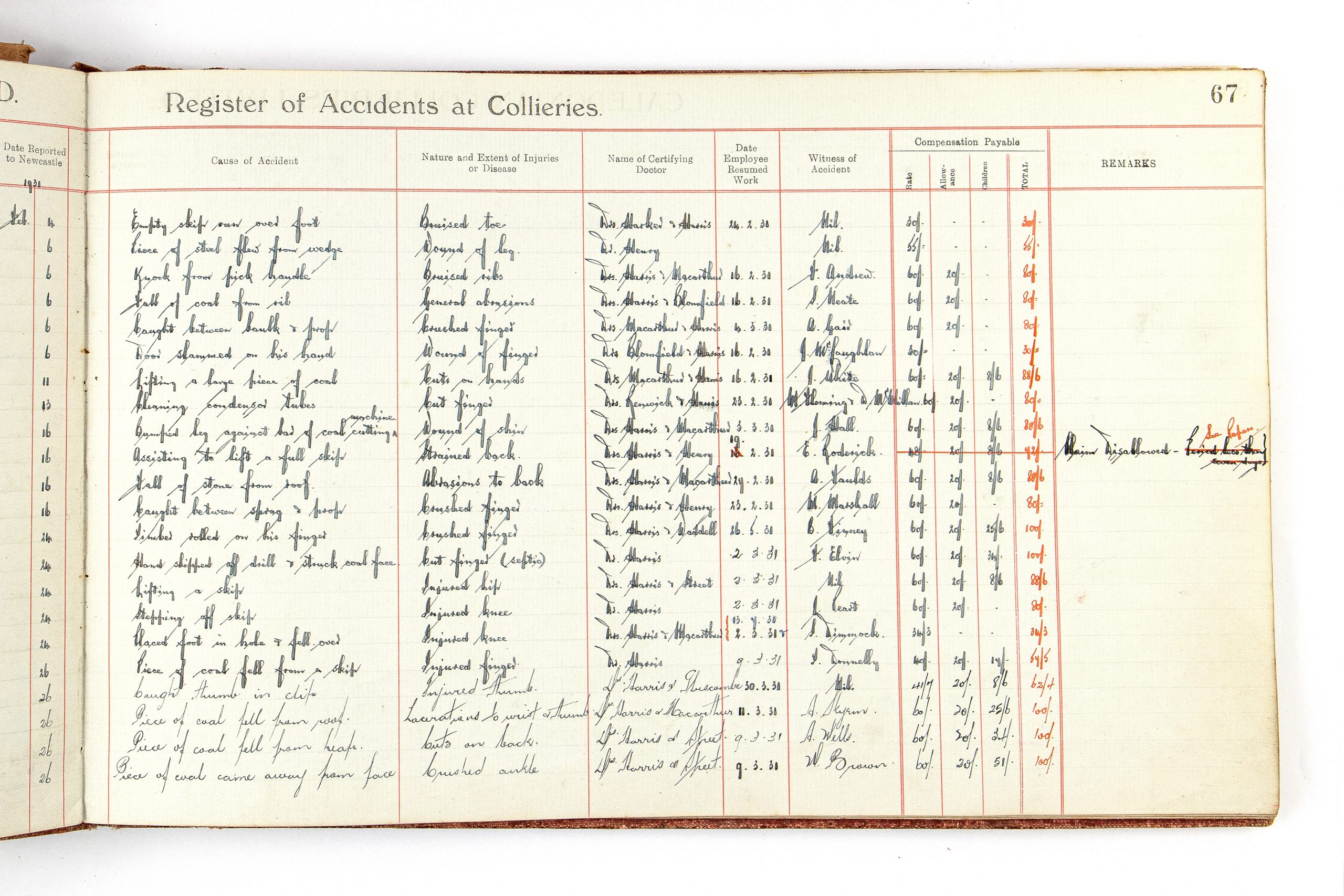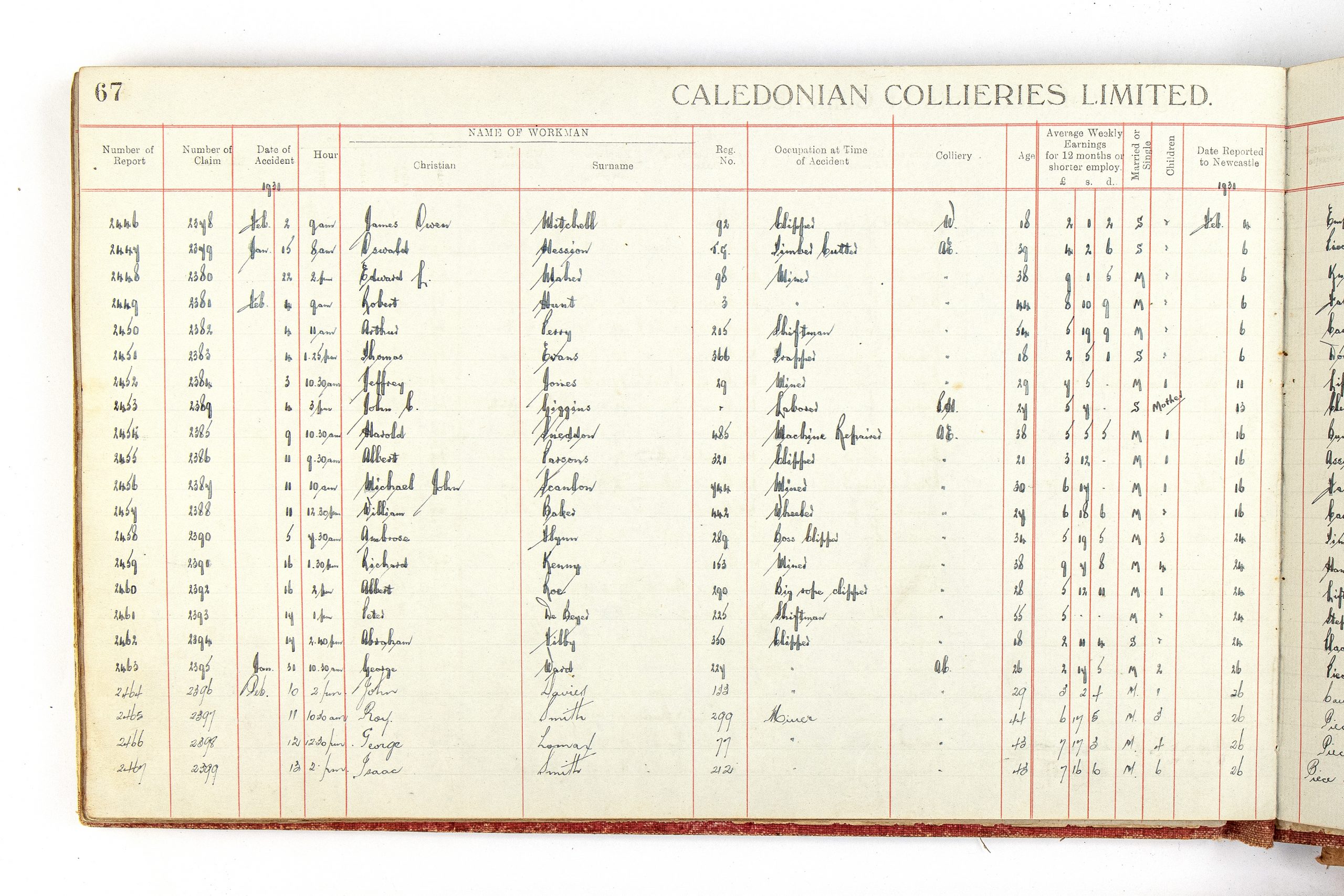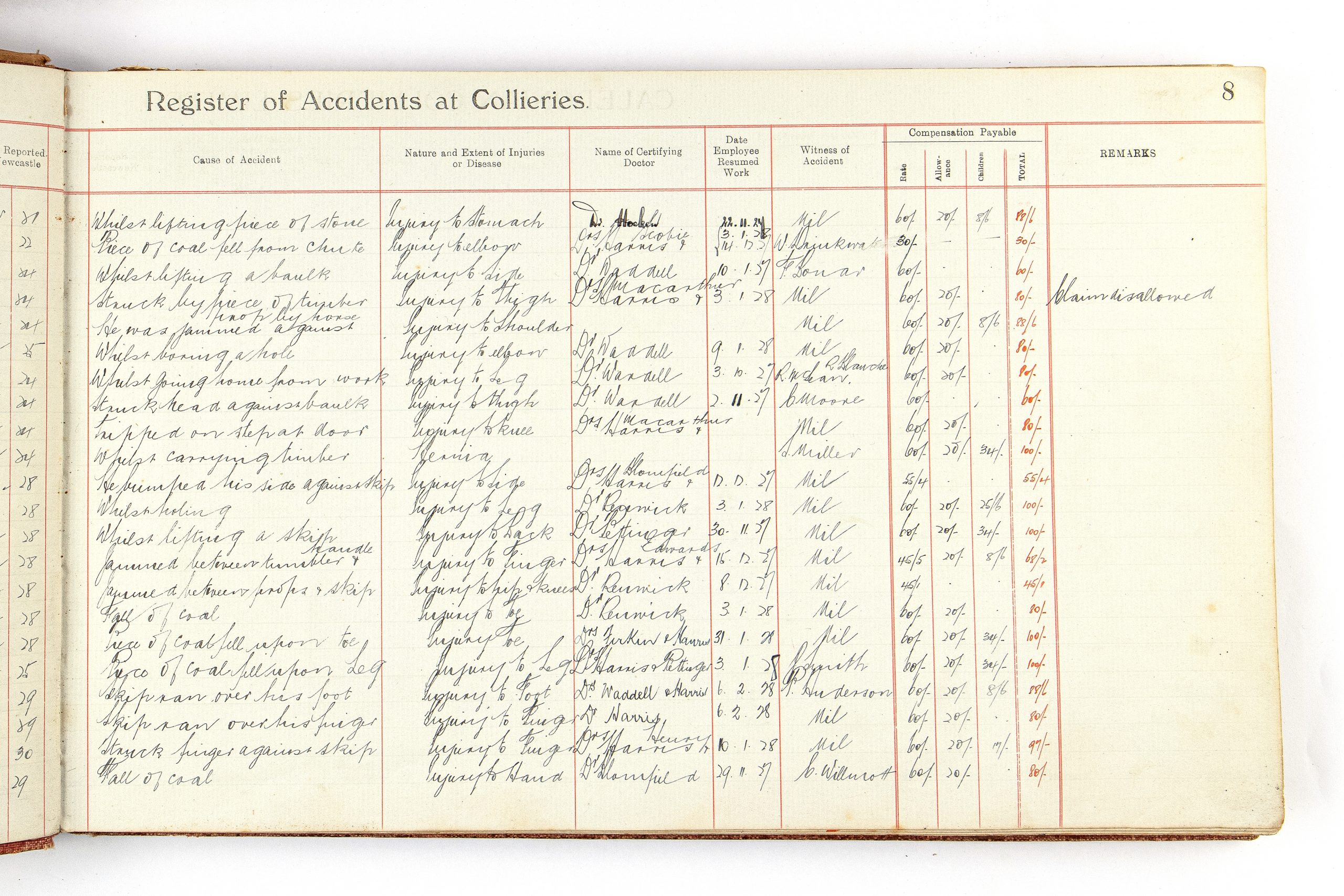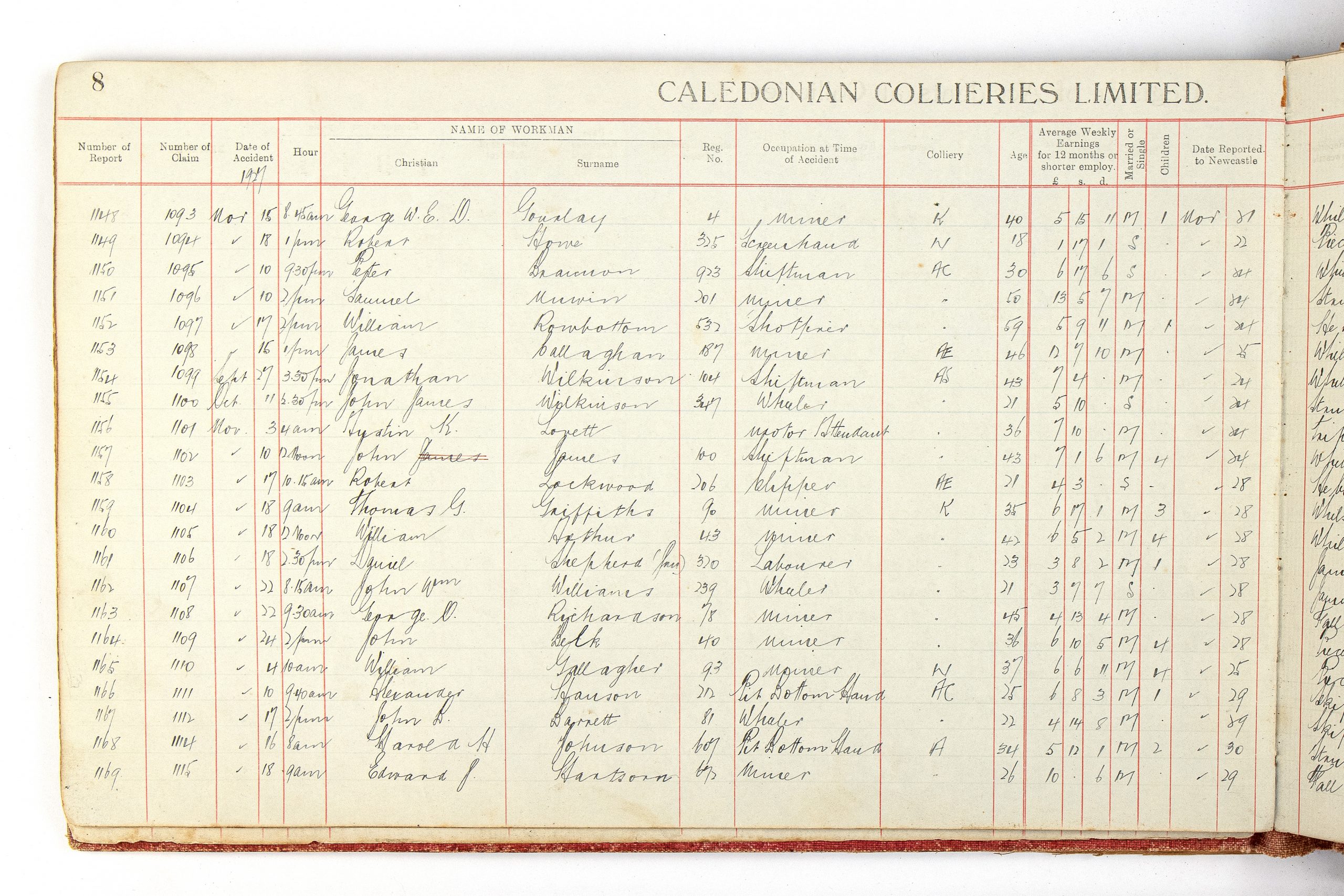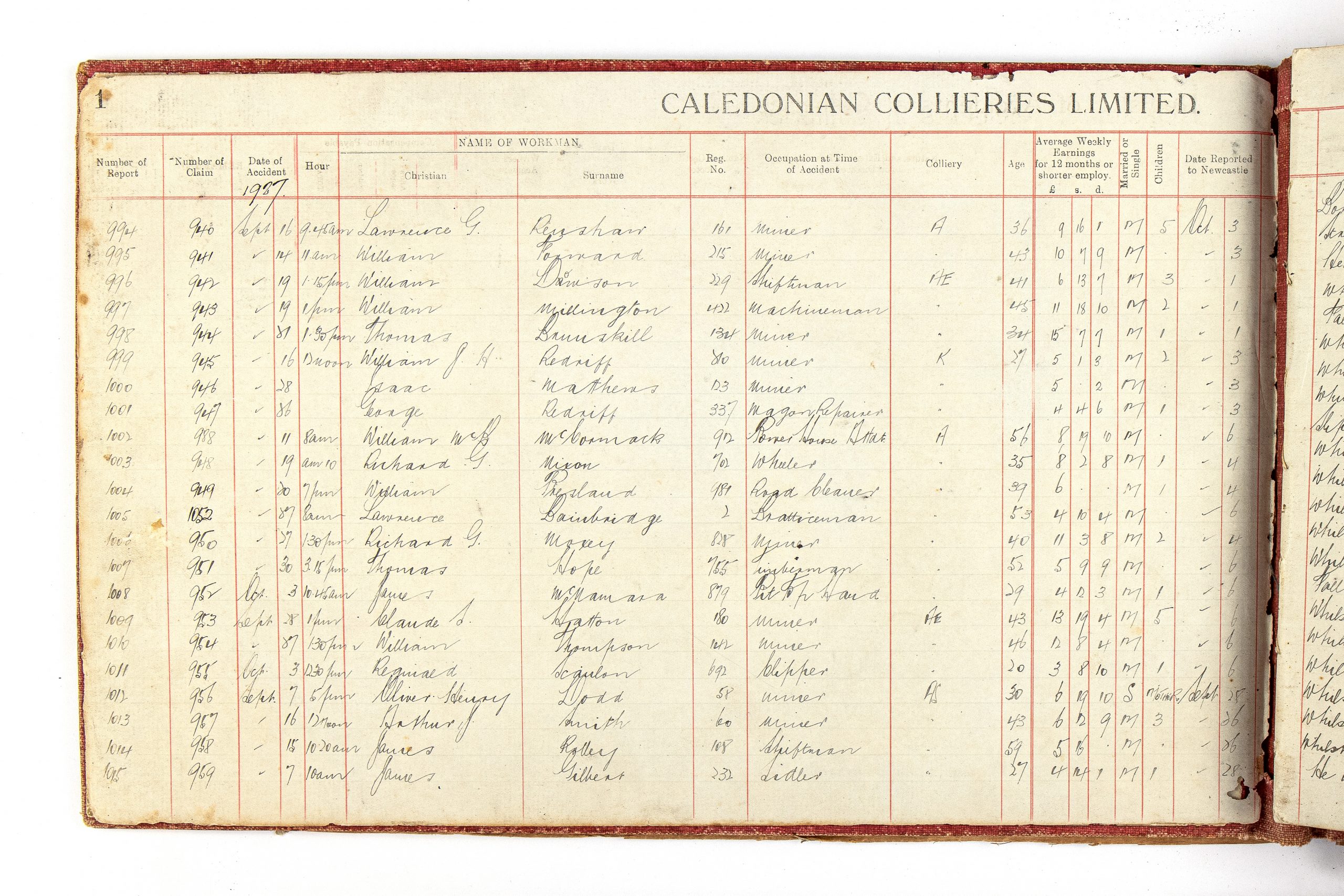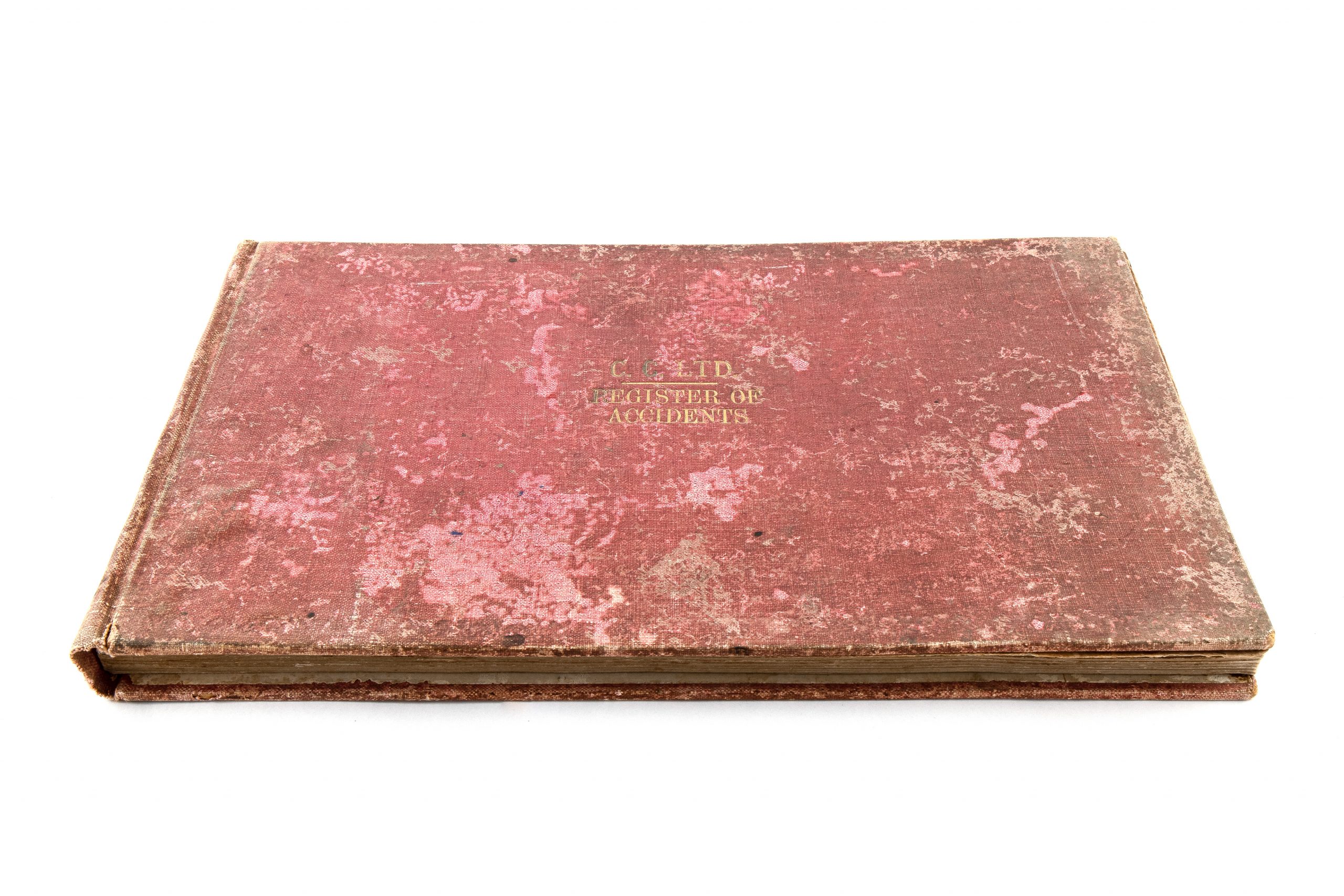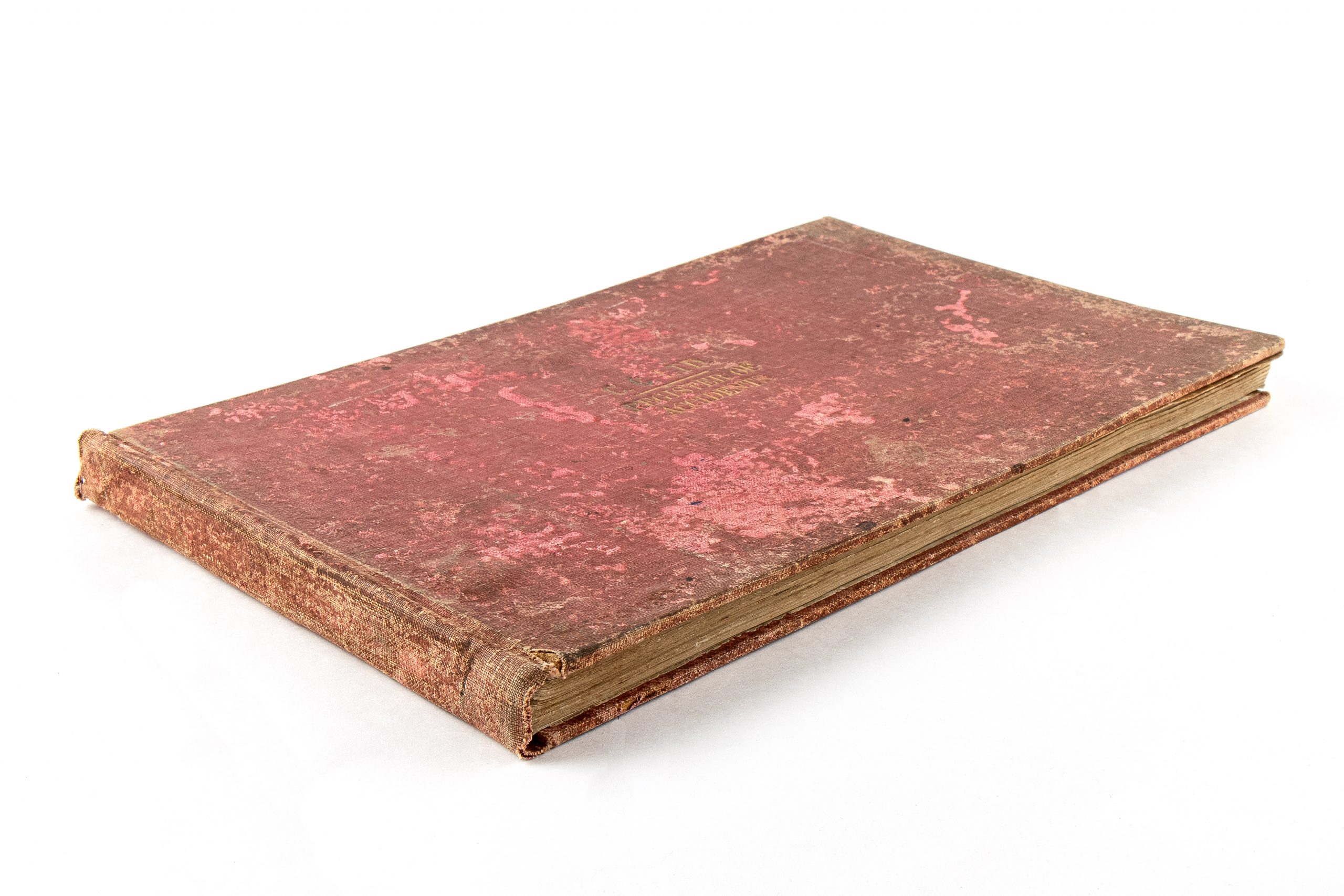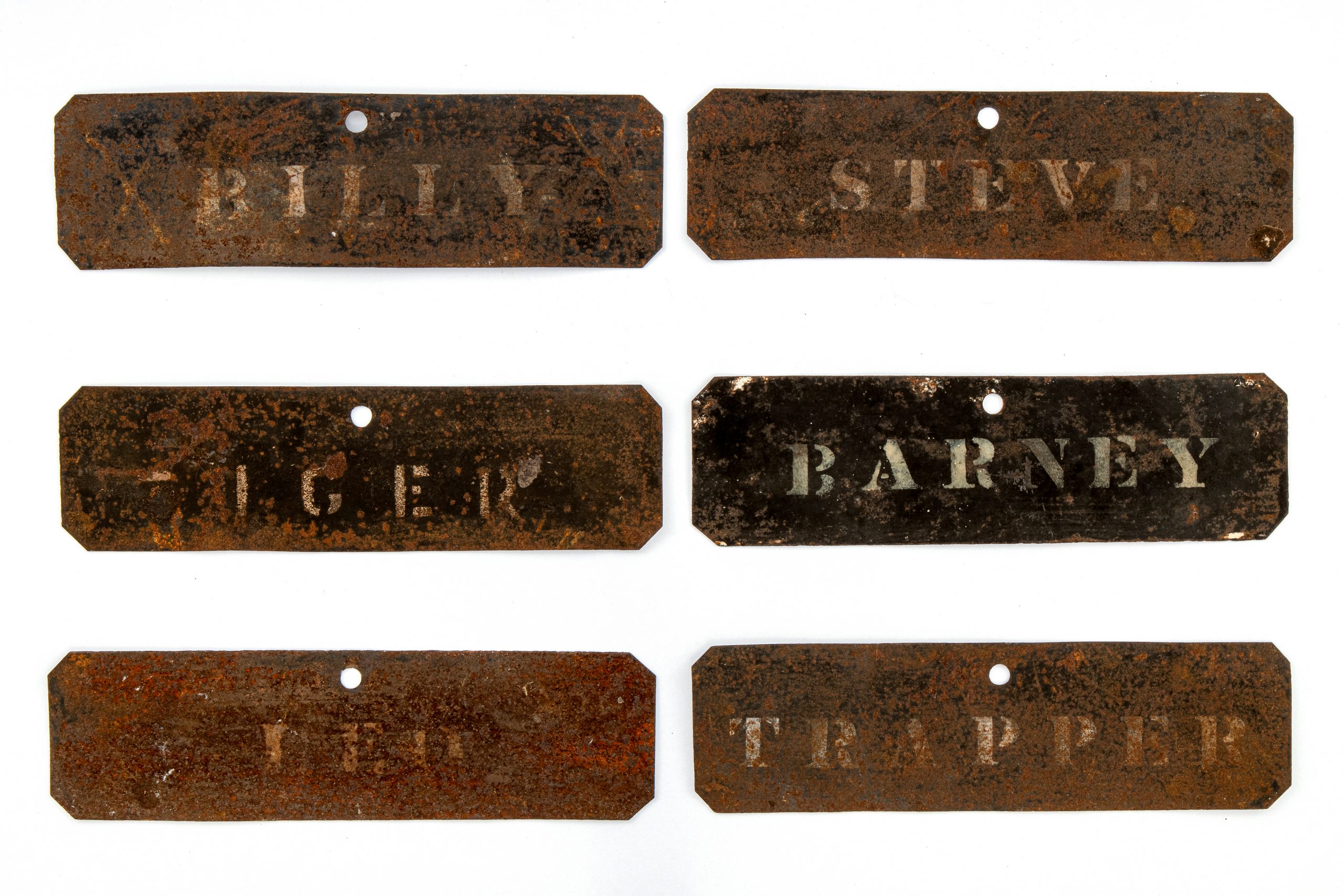Waiting to Happen
Mining Accidents and Compensation in 1920-30s Maitland
In the Aberdare Extended colliery pit where 34-year-old Thomas Brunskill was mining, it was dark, dusty, muddy, and noisy. About 1.30pm, without warning, several large chunks of the prized dense black coal detached from the roof of the confined space and struck Thomas, badly injuring his neck and shoulder. The year was 1927 and he had a wife and child at home to support.
With the coal industry’s long history of poor conditions for workers and industrial disputes, it may come as a surprise that as early as the 1920s, work injuries on the South Maitland coalfields, NSW, were reported and compensated. The details of Thomas Brunskill’s injury and compensation, and those of his colleagues, are recorded in this Register of Accidents ledger kept between 1927 and the 1930s by Caledonian Collieries Pty Ltd, in compliance with the NSW Coal Mines Regulation Act.
After enduring catastrophic mine disasters, and through strikes and negotiations, the miners and other workers of the nineteenth century paved the way for the introduction of workers’ compensation legislation in Australia about 1900. And the companies benefited too – the cost of preventing accidents was less than compensation payments and lost productivity. This accident ledger is evidence of some of the earliest workers’ compensation implemented around the world.
Thomas Brunskill continued his mining career and in 1941 suffered yet another brutal injury, his leg being lacerated by a drill, and was admitted to hospital yet again in 1945. Frequent injuries and chronic health problems were typical for miners, and still are today.


